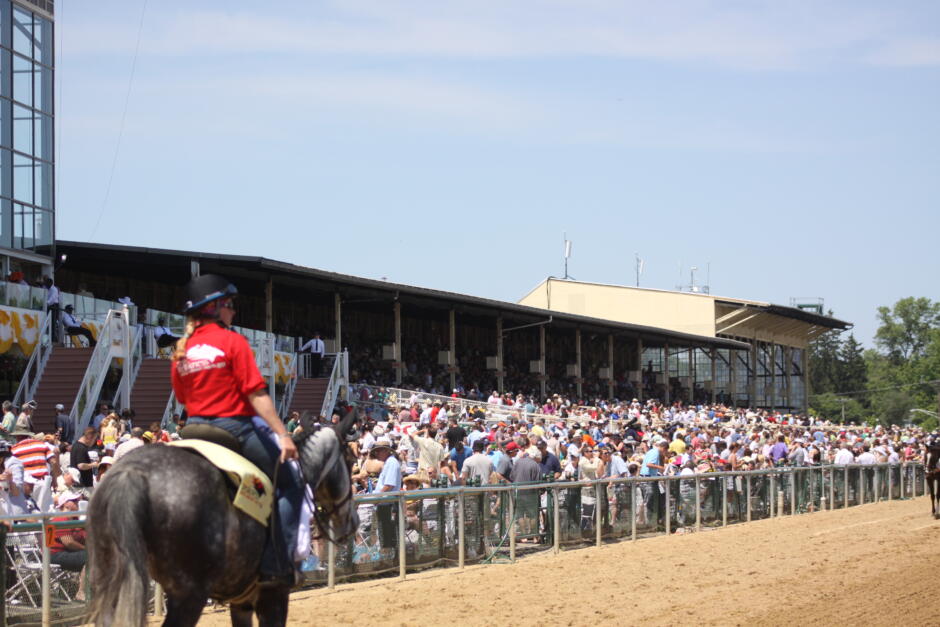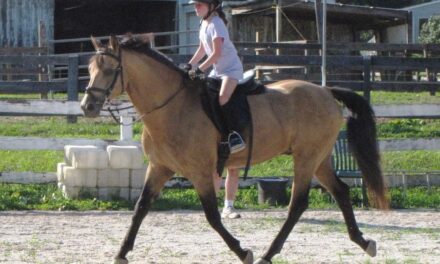by Katherine O. Rizzo (first published in the September 2020 Equiery)
The Preakness Stakes is by far the biggest racing day on the Maryland schedule each year. It is the day when the world descends on Maryland to see if that year’s Kentucky Derby winner will make it one step closer to becoming part of Triple Crown history. The week leading up to the Preakness is always an exciting one with racing fans getting a chance to look behind the scenes of Pimlico through Sunrise Tours, industry leaders highlighting excellence through the Alibi Breakfast awards and of course, two days packed full of stakes races and fun on Black-Eyed Susan and Preakness Day.
But this year is different, as the COVID-19 pandemic has thrown one giant wrench into the Triple Crown.
The “Triple Crown”
As the world came to a halt this spring, the Maryland Jockey Club made the decision to move the Preakness Stakes to October 3 this year. Traditionally, the Preakness is the second race in the Triple Crown and is run mid-May. The Belmont Stakes, normally the last race in the series, decided to run on June 20, though the race distance was shortened, and the Kentucky Derby moved to September 5.
Thus, the 2020 Triple Crown will be run in a completely different order: Belmont, Derby and then Preakness. The change certainly breaks with tradition and brings up a whole host of questions, uncertainties and excitement related to what the 2020 Triple Crown will actually look like.
“The Triple Crown is completely upside down this year,” trainer Graham Motion stated. “With two races in the fall, you are going to see a deeper field of more accomplished horses.” Motion, who won the 2011 Kentucky Derby with Animal Kingdom, pointed out that most horses are barely three-years-old when the Derby typically runs. “When we won with Animal Kingdom, he had never run on dirt before. Now, you have more developed horses that have more experience running,” he said.
Motion predicts that the fall races will create more competitive fields at both the Derby and Preakness. He also pointed out the longer time between each race gives horses more time to recover and also more time to train between races. All these changes have Motion stating, “There will need to be an astrix next to this year because of how different the schedule is. It will be interesting to watch it all play out.”
Fall Stakes Schedule
One positive to the Preakness move is that the various Preakness Week stakes races are moving to the fall as well. Trainer Katy Voss stated, “There are loads of opportunities for the stakes horses starting in September.” Voss is currently looking to run a few horses in the new Preakness Week stakes races. Motion agrees stating, “it’s a bonus to have so many stakes races to point to this fall.”
Trainer Phil Shoenthal stated that the Preakness move does not have a huge effect on most mid-Atlantic trainers adding, “for every person who was unhappy with the change you have someone who is happy [about it].” Shoenthal pointed out that some trainers had horses ready to run in May while others have horses that have benefited from having more time to develop for fall stakes.
Shoenthal’s biggest concern about stakes races in general for 2020 is funding the purses. “We as horseman really need to have a conversation about the purses,” he said pointing out that a large amount of purse money comes from slots. “The casinos were closed for so long and this has had a big impact on how much money is available. We need to figure out the best way to utilize what money there is.”
Voss pointed out that the industry has lost around 20% of the year’s purse funds due to the lack of revenue from slots.
Racing During COVID
As many in the horse industry have found, trying to run some sort of normal operations during this pandemic is basically impossible. But as others in Maryland’s equine industry have also done, Maryland’s racing industry has found ways to adapt and keep on running.
Throughout the pandemic, the Maryland Jockey Club has issued “COVID-19 Quarantine Updates” with various changes to procedures in order to continue with live racing. Currently, live Thoroughbred racing is at Laurel Park only, with the summer Timonium meet being moved to Laurel Park and a fall Preakness meeting to be run at Pimlico still in the works.
MJC has limited who can come onto the track and how long individuals can remain in various areas such as the paddock, stables and along the rail. Temperature check points are also being used and face masks are mandatory with jockeys pulling them down once in the starting gate. “We are being a lot more cautious than many other people in the state,” Voss stated. But this cautiousness is what is keeping Maryland’s racing industry open for business.
“We were so fortunate so far but [COVID-19] isn’t over yet and the most important thing is for all of us not to get careless,” Voss added.
Shoenthal said COVID-19 has only slightly changed his schedule this year and he has been shipping horses to other tracks. “Some of these tracks you have to just drop the horse off with a trainer there so there are added costs,” he said, adding, “If you have enough will, there is a way and you just do what you have to do to get it done.”
Motion however stated that some of these restrictions have made him think twice about where he ships his horses. “Most tracks are not letting you bring your own team so you have to really trust who is there working your horses. That’s hard for a trainer to do and is not a risk I want to take unless needed,” he said. At the time of this interview, Motion was based at Saratoga in New York and added, “I also don’t want to put my staff or myself at risk of [getting] COVID by traveling a lot right now.”
The Jockey Shuffle
In order to prevent the spread of COVID-19, MJC, along with many tracks in the U.S., have put a ban on jockey travel. In essence, jockeys must choose which track they want to be based at and cannot switch tracks until they self-quarantine for 14 days or provide a negative COVID-19 test result.
These restrictions have greatly greatly affected the dynamics of races in terms of who gets to ride who as many trainers have to pick jockeys from the tracks they are running out of instead of those they normally hire. “You are really seeing this change the smaller tracks and affects who you can use,” Motion said.
Voss stated that she only has a few horses running at the time of this interview and was “staying local” and that her main jockey had chosen to stay in Maryland as well. “It is giving our local guys more [ride] opportunities, which has been great,” she added.
Shoenthal added that the jockeys he typically uses to exercise his horses in Maryland normally go to Charles Town and Delaware to race in the afternoons and evenings, but that has all changed this year. “I have a horse pointed at the Charlestown Oaks and we must use Charlestown jockeys. They have made the right decision and it’s a huge opportunity for those guys,” he stated.
He also wonders if the jockey rule will change for the Preakness. “If Tiz the Law wins the Derby, he’s coming to Maryland so who then gets to ride him?” he asked. “My personal opinion is we need to keep to Maryland jockeys and keep us all safe.” Tiz the Law won the Belmont this year and is currently pointed at the Kentucky Derby. He has yet to be defeated in 2020.
Maryland native and jockey Forest Boyce decided to move to Colonial Downs once racing started back up. “At the time, Maryland was only racing two days a week and a lot of my business was shipping here,” she said. During a normal summer, Boyce would be riding at Maryland, Delaware and Virginia tracks. She added that being confined to one track makes it hard to follow her good horses around which, “is quite frustrating but [I] know everyone is in the same boat.”
Overall, Boyce reported that she is very impressed with everything the different tracks are doing to keep people safe from COVID-19. “They take our temps at various check points throughout the day and monitor everyone closely,” she said. “In a lot of ways we are much better protected than a lot of other industries out there right now.”
Unfortunately, even with the best procedures in place, COVID-19 struck again as shortly after this interview was done, Colonial Downs was shut down when a jockey tested positive for COVID-19.
An Uncertain Future
Like many other industries across the country, the future during COVID-19 is very uncertain. Until a working vaccine is developed and better treatments are found, COVID-19 continues to wreak havoc on industries. Luckily, with the help of innovative people, Maryland’s racing industry is prevailing.
Voss wonders what the fall Thoroughbred sales will look like. “Like a lot of other industries, many are just leaving the business.”
Shoenthal is hoping that as time goes on, MJC will have found ways to allow greater access to owners and fans. “Without owners there is no sport,” he said. “When you take the live experience out of it [for owners], I worry a lot will start pulling out.” He also worries about how the industry will survive without the fans.
There is one thing however we can bet on… whether watching from our couches at home, at an off-track betting site, or even streaming on our phones, this year’s Preakness Stakes on October 3 is certainly a historical moment in Triple Crown history to look forward to!











